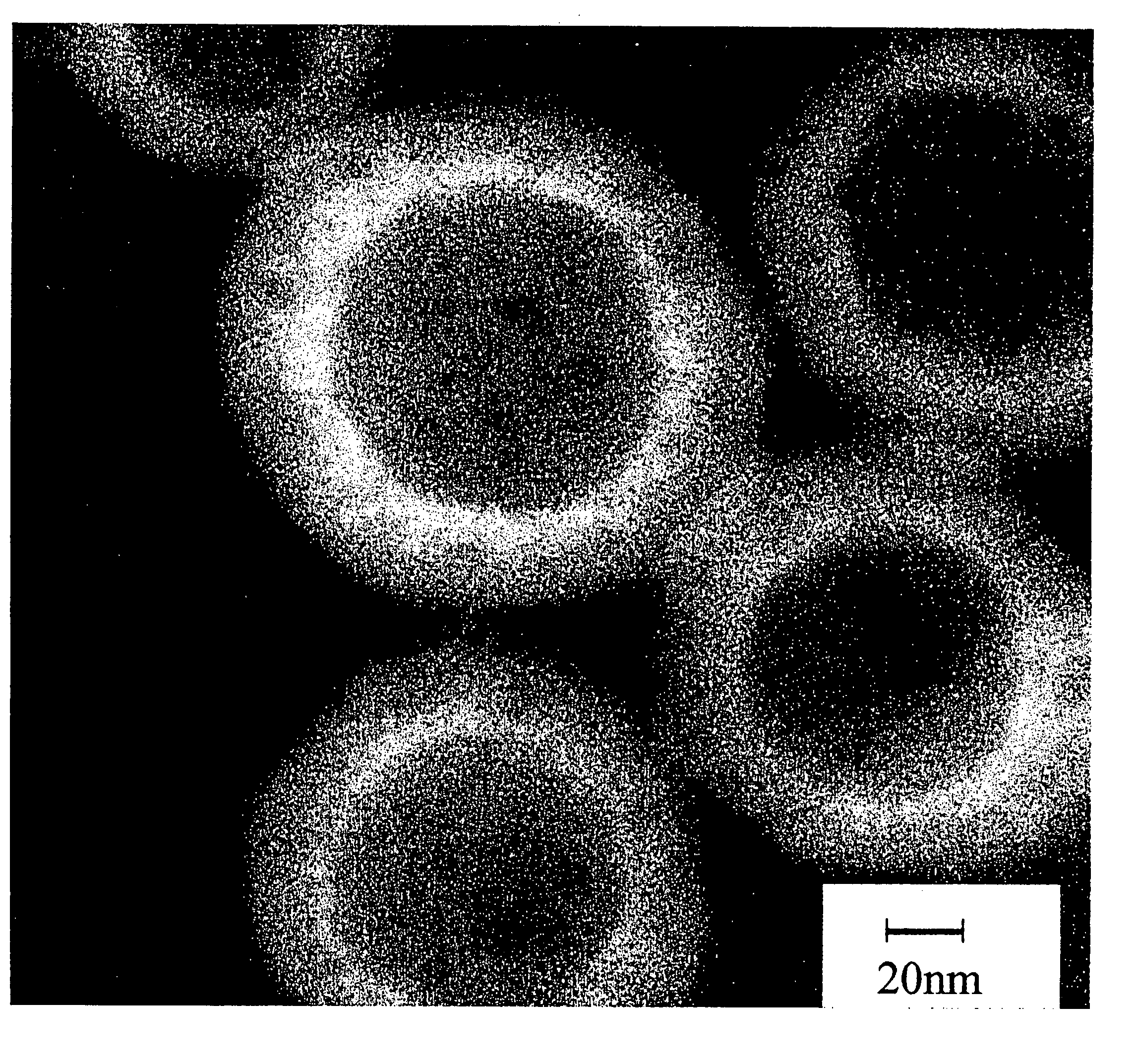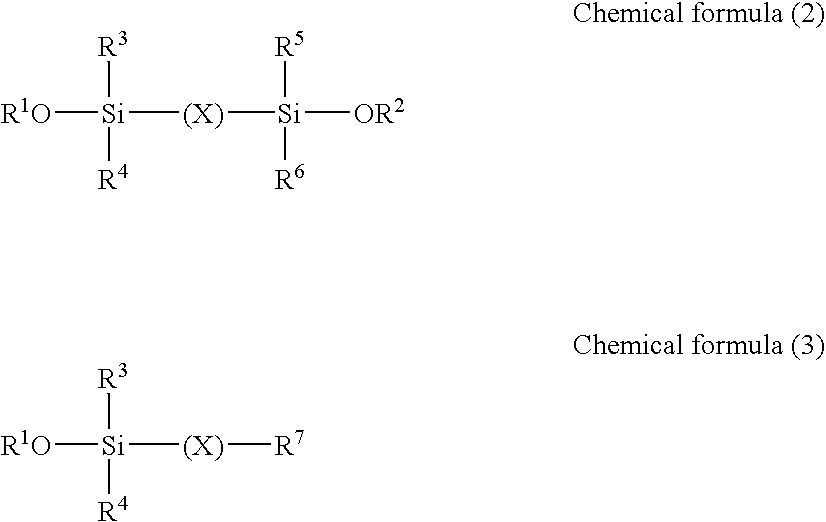Method Of Producing Silica-Based Particles, Paint For Forming Coating Film, And Substrate With Coating Film
- Summary
- Abstract
- Description
- Claims
- Application Information
AI Technical Summary
Benefits of technology
Problems solved by technology
Method used
Image
Examples
embodiment 1
Preparation of Silica-Based Particles (P-1)
[0106] A mixture of 100 g of a silica sol with an average particle diameter 5 nm and the SiO2 concentration of 20% by weight and 1900 g of deionized water is heated to 80° C. The pH of the reaction liquid is 10.5, and to the reaction liquid are simultaneously added 9000 g of a sodium silicate solution with 1.17% by weight as SiO2 and 9000 g of a sodium aluminate solution with 0.83% by weight as Al3O3. The temperature of the reaction liquid is kept at 80° C. The pH of the reaction liquid goes up to 12.5 just after the addition and little changes after the materials are added. After termination of the addition, the reaction liquid is cooled to the room temperature and washed with an ultrafiltration membrane to prepare a dispersion liquid of SiO2.Al2O3 primary particles with a solid phase concentration of 20% by weight.
[0107] 1700 g of deionized water is added to 500 g of the primary particle dispersion, and the mixture is heated to and kep...
embodiment 2
Preparation of silica-based particles (P-2)
[0122] Like in Embodiment 1, a mixture of 1500 g of a prepared aqueous dispersion with silica-based particles (P-1-1) whose solid phase concentration is 20% by weight, 500 g of deionized water, 1,750 g of ethanol and 626 g of 28% ammonia water is heated to 35° C., 104 g of ethyl silicate (SiO2 concentration of 28% by weight) is added thereto to form a silicate film, and a dispersion liquid of silica-based particles (P-2-1) with the solid phase concentration of 20% by weight is obtained by adding 5 litters of deionized water and washing the mixture with a ultrafiltration membrane.
[0123] Next, a dispersion liquid with silica-based particles (P-2-1) is aged for 1 hour at 200° C., washed with an ultrafiltration membrane adding 5 litters of deionized water to obtain a dispersion liquid of silica-based particles (P-2-2) with the solid phase concentration of 20% by weight. At the point of time, the contents of Na2O and NH3 in the aqueous disper...
embodiment 3
Preparing a Silica-Based Particle (P-3)
[0128] An alcoholic dispersion liquid of silica-based particles (P-3) with the solid phase concentration of 20% by weight is prepared like in Embodiment 2 except for the use of 30,000 g of potassium nitrate with the concentration of 0.5% by weight instead of 50,400 g of sodium sulfate with the concentration of 0.5% by weight. It is to be understood that the contents of Na2O and NH3 in the aqueous dispersion liquid of the silica-based particles (P-3-3) are 0.4 ppm and 800 ppm per silica-based particle respectively.
Preparation of a Substrate with a Transparent Coating Film (A-3)
[0129] A substrate with a transparent coating film (A-3) is obtained like in Embodiment 1 except for the use of an alcoholic dispersion liquid of silica-based particles (P-3) instead of an alcoholic dispersion liquid of silica-based particles (P-1).
Preparation of a Substrate with a Transparent Coating Film (B-3)
[0130] A substrate with a transparent coating film (B-...
PUM
| Property | Measurement | Unit |
|---|---|---|
| Temperature | aaaaa | aaaaa |
| Temperature | aaaaa | aaaaa |
| Fraction | aaaaa | aaaaa |
Abstract
Description
Claims
Application Information
 Login to View More
Login to View More - R&D
- Intellectual Property
- Life Sciences
- Materials
- Tech Scout
- Unparalleled Data Quality
- Higher Quality Content
- 60% Fewer Hallucinations
Browse by: Latest US Patents, China's latest patents, Technical Efficacy Thesaurus, Application Domain, Technology Topic, Popular Technical Reports.
© 2025 PatSnap. All rights reserved.Legal|Privacy policy|Modern Slavery Act Transparency Statement|Sitemap|About US| Contact US: help@patsnap.com



